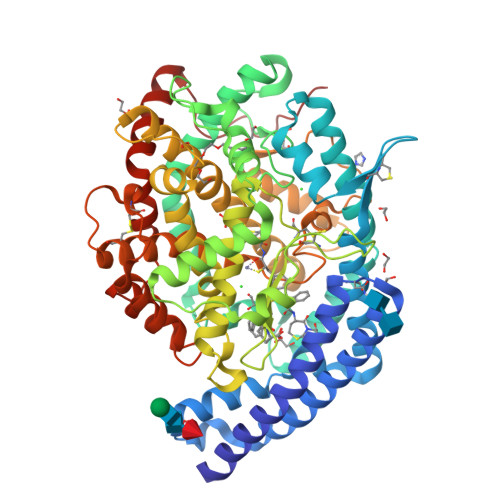Molecular Basis for Multiple Omapatrilat Binding Sites within the ACE C-Domain: Implications for Drug Design.
Cozier, G.E., Arendse, L.B., Schwager, S.L., Sturrock, E.D., Acharya, K.R.(2018) J Med Chem 61: 10141-10154
- PubMed: 30372620
- DOI: https://doi.org/10.1021/acs.jmedchem.8b01309
- Primary Citation of Related Structures:
6H5W, 6H5X - PubMed Abstract:
Omapatrilat was designed as a vasopeptidase inhibitor with dual activity against the zinc metallopeptidases angiotensin-1 converting enzyme (ACE) and neprilysin (NEP). ACE has two homologous catalytic domains (nACE and cACE), which exhibit different substrate specificities. Here, we report high-resolution crystal structures of omapatrilat in complex with nACE and cACE and show omapatrilat has subnanomolar affinity for both domains. The structures show nearly identical binding interactions for omapatrilat in each domain, explaining the lack of domain selectivity. The cACE complex structure revealed an omapatrilat dimer occupying the cavity beyond the S 2 subsite, and this dimer had low micromolar inhibition of nACE and cACE. These results highlight residues beyond the S 2 subsite that could be exploited for domain selective inhibition. In addition, it suggests the possibility of either domain specific allosteric inhibitors that bind exclusively to the nonprime cavity or the potential for targeting specific substrates rather than completely inhibiting the enzyme.
Organizational Affiliation:
Department of Biology and Biochemistry , University of Bath , Claverton Down , Bath BA2 7AY , United Kingdom.




























